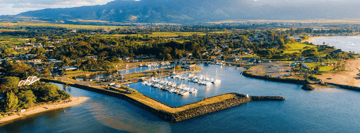At the start of 2019, Transport Canada introduced a range of new regulations governing the use of drones across the nation. Those rules came into effect in June. They take a slightly different approach to governing unmanned operations than many other countries.
Before we get into the detail of flying a drone in Canada, let’s go through the main points.
The first is that drone pilots in Canada have to register their aircraft. All drones that weigh between 250g and 25kg must be registered with Transport Canada; pilots are required to mark drones with their registration number before they fly.
The second is that, rather than separating drone flights by whether they are commercial or recreational, Transport Canada has two categories that include both types of operation: Basic and Advanced.
As well as registering, drone pilots have to gain certification in order to fly legally. The level of certification depends on the category of flight that you want to undertake.
So let’s get into it.
Basic Vs Advanced Operations
As mentioned above, Canada doesn’t apply different rules depending on whether you’re flying for fun or commercial purposes. Instead, your flight and the steps you have to take will depend on whether the mission is Basic or Advanced.
Naturally, this means the measures you are required to have in place could shift from one flight to another.
The three conditions that classify an operation as basic are:
- The flight is in uncontrolled airspace
- The flight is no closer than 30 meters (100 feet) horizontally from bystanders
- The drone never flies above bystanders
If any of these conditions are not met, the flight is classified as an advanced operation. With this in mind, it’s easy to see how some flights that would be firmly in the ‘commercial’ category elsewhere are simply considered as basic in Canada.
Certain mapping missions, photography shoots and inspections, to name a few.
So what do you need to do in order to conduct basic drone operations?
The first thing you need to do, as mentioned above, is register your drone with Transport Canada before you fly it for the first time. You must also mark your drone with its registration number.
Once that’s done, you’ll have to pass Transport Canada’s Small Basic Exam. The 90-minute test is made up of 35 multiple-choice questions. You’ll need a score of 65% to pass.
Transport Canada recommends that you attend a drone flight school before attempting the exam. The online exam questions are based on the Knowledge Requirements for Pilots of Remotely Piloted Aircraft Systems.
After passing you’ll receive your Pilot Certificate for Basic Operations, which you should be ready to show when out in the field.
So how about Advanced Operations? If you meet any of these conditions, you’ll need to take some extra steps before you fly:
- You want to fly in controlled airspace
- You want to fly over bystanders
- You want to fly within 30 meters (100 feet) of bystanders (measured horizontally)
As with Basic ops, you’ll have to register your aircraft with Transport Canada and make sure the registration number is marked on its body.
You’ll then have to pass the Small Advanced Exam, as well as a practical flight review with a flight reviewer - usually a registered drone pilot at a training school near you.
Once again, the online exam questions are based on the Knowledge Requirements for Pilots of Remotely Piloted Aircraft Systems. And once again, Transport Canada suggests you complete a course with a drone flight school to prepare for the exam.
But this time it’s significantly harder to pass. The Small Advanced Exam features 50 multiple-choice questions. You have 60 minutes to complete the exam and a score of 80% or higher is required to pass.
You will then be in a position to show your Pilot Certificate for Advanced Operations when out in the field.
Depending on the mission, you may also have to seek permission from air traffic control - most likely NAV CANADA - if you want to operate, which you can request here via an RPAS Flight Authorization.
Finally, you’ll need to fly within what Transport Canada is calling the “operational limits” of your drone.
You can only use drones that meet the safety requirements for the type of operation you want to conduct. Transport Canada’s full list of drones that can be used for advanced operations is here. Make sure the hardware you have has been approved for the type of mission you want to fly.
One last point: Once you’ve gained an Advanced Operations Pilot Certificate, you are free to carry out basic operations without needing to pass another test.
General regulations for drone flights in Canada
Aside from the specific outline of Basic and Advanced operations, there are a number of general regulations that drone pilots in Canada must adhere to.
These have been designed with the safety of the public and other airspace users in mind.
While flying, there are a number of common-sense rules in place to keep drone pilots out of trouble, including:
- Fly your drone within line of sight at all times
- Below 122 meters (400 feet)
- Away from bystanders, (and at a minimum horizontal distance of 30 meters for basic operations)
- Away from emergency operations and advertised events
- Away from airports and heliports
- 5.6 kilometers (3 nautical miles) from airports
- 1.9 kilometers (1 nautical mile) from heliports
- Outside of controlled airspace (unless you are cleared for Advanced ops and have clearance from NAV CANADA)
- Far away from other aircraft
Flying in Canada: The Key Points
So, just to summarize our roundup of drone laws in Canada:
- You must register your drone and mark it with its registration number.
- There’s a distinction between Basic and Advanced operations, and some commercial flights will form under the former.
- Whichever category you want to operate within, you’ll need to pass an online exam and, if you’re hoping to undertake Advanced operations, a practical flight review.
- Transport Canada has put together a list of drones and operations they are allowed to be used for. You can search that here.





